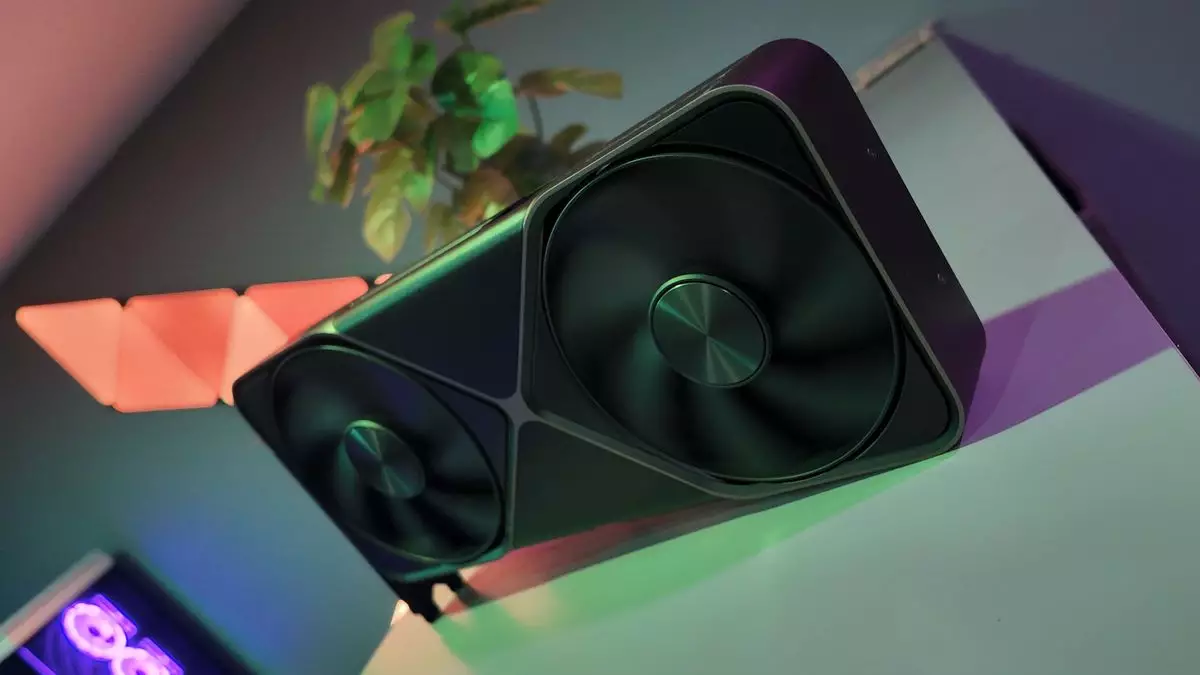The release of Nvidia’s RTX 50-series GPUs, namely the RTX 5080 and RTX 5090, has been met with an increasingly alarming number of user reports indicating serious technical issues. While new hardware often experiences teething problems, the reports of crashes and black screens from consumers have raised eyebrows, prompting questions about the reliability of these cutting-edge graphics cards. As the situation unfolds, we delve into the nature of these issues, their potential causes, and the community response.
The initial wave of user feedback from owners of the RTX 50-series GPUs has been mixed, but a disturbing trend is surfacing. Many users have reported experiencing black screens, with varying contexts contributing to these episodes—ranging from switching resolution settings to system overload under heavy graphical loads. A distressing subset of users has even reported cases of their graphics cards becoming “bricked,” a term used when hardware becomes non-functional, leaving many in the dark about the fate of their expensive investments.
The landscape of this situation is far from clear. While some users report consistent and repeatable failures, others find the black screens occurring intermittently and seemingly without warning. For a number of users, rebooting their systems results in the card being unrecognized by the BIOS or device manager, only to occasionally spring back to life after several restarts. That variability adds to the frustration of those affected and complicates any hope of identifying a common cause or dependable fix.
Insights from the Testing Community
While many reports suggest serious issues, it’s worth considering that not everyone has faced problems. Certain reviewers and enthusiasts, including those who have closely tested the RTX 5080 and 5090, have reported minimal incidents. Some account for sporadic crashes, usually associated with multitasking or alt-tabbing during gameplay, but have not encountered the debilitating black screen issues that plague others.
A critical aspect of these tests involves careful installation procedures, including thorough driver sweeps before introducing new hardware. This could hint that some of the reported problems stem from user oversight or overly aggressive driver installations that conflict with existing data on the system. The trend of users taking preventive care in driver management stands in stark contrast to those experiencing persistent black screen failures, pointing to possible variables that could impact device performance.
As investigations progress, Nvidia has noted that they are currently looking into the RTX 50-series complications, suggesting that the root of these problems may lie within the latest software—the Nvidia 572.16 driver release. In the realm of PC gaming and hardware, driver compatibility and stability are paramount; any instability in these areas can have cascading effects on system performance. With reports confirming that users of both the new RTX 50-series and even some previous-generation RTX 40-series cards are encountering issues linked to this driver, the urgency for Nvidia to address these concerns effectively escalates.
Given the frequency of problems arising, speculation suggests the need for a hotfix or an updated driver to stabilize operations. Both anecdotal evidence from users and the continuum of crashes hint at underlying conflicts within the driver architecture or residual data causing disruptive conflicts. Until Nvidia takes decisive action, the community is left to implement their own troubleshooting steps, such as complete driver uninstallations using utility programs like DDU (Display Driver Uninstaller).
Community Responses and Potential Solutions
A broad spectrum of community engagement has emerged in response to these issues. YouTube channels and forums have become bustling hubs of discussion as users share personal experiences and potential fixes. Some individuals have reported temporary resolutions after thoroughly cleaning their driver installations, indicating that for some, the problems could be more manageable than they initially appear. Others remain uncertain, facing uncertainty as they attempt to navigate the multifaceted complications posed by their new hardware.
A recommendation gaining traction among affected users is to adjust their system settings, particularly the PCIe settings, to improve stability. Many have suggested transitioning the graphics port to PCIe Gen 4 mode in light of recent reports about signal integrity problems associated with the new RTX series. This is a stop-gap effort as the community awaits definitive answers from Nvidia.
Though Nvidia has yet to confirm the specifics of the driving factors behind the reported issues, the spotlight on these concerns emphasizes the delicate balance of innovating while maintaining reliability. Given the sheer volume of excitement surrounding the RTX 50-series and its performance advantages, it is both unfortunate and critical that these issues arise. A clear communication strategy from Nvidia, alongside timely resolutions, will be imperative moving forward. In the meantime, both users and reviewers alike are hoping for effective solutions, as these powerful GPUs have much potential to offer when operating at their best.

